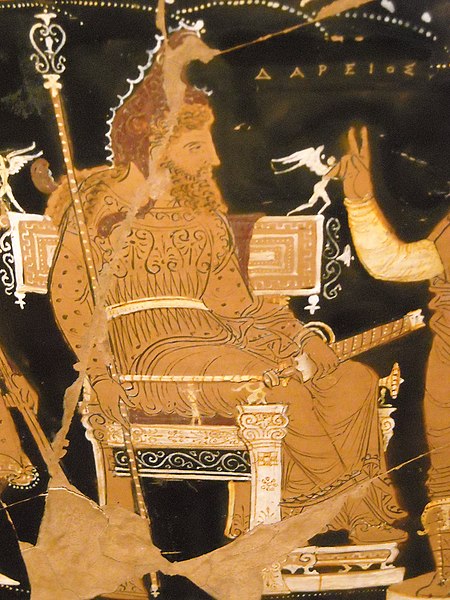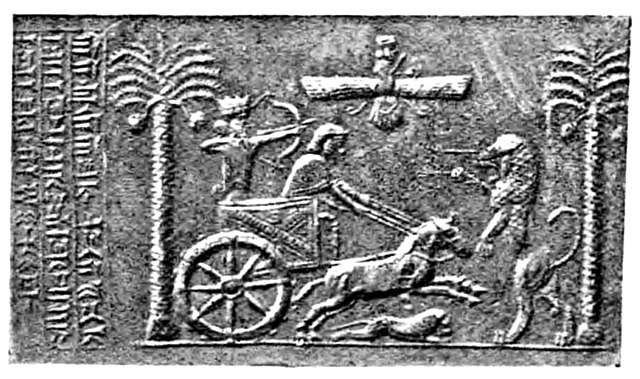The Battle of Marathon took place in 490 BC during the first Persian invasion of Greece. It was fought between the citizens of Athens, aided by Plataea, and a Persian force commanded by Datis and Artaphernes. The battle was the culmination of the first attempt by Persia, under King Darius I, to subjugate Greece. The Greek army inflicted a crushing defeat on the more numerous Persians, marking a turning point in the Greco-Persian Wars.
1900 depiction of the Battle of Marathon
The plain of Marathon today, with pine forest and wetlands.
Darius I of Persia, as imagined by a Greek painter on the Darius Vase, 4th century BC
Marshlands at Marathon.
First Persian invasion of Greece
The first Persian invasion of Greece, during the Greco-Persian Wars, began in 492 BC, and ended with the decisive Athenian victory at the Battle of Marathon in 490 BC. The invasion, consisting of two distinct campaigns, was ordered by the Persian king Darius the Great primarily in order to punish the city-states of Athens and Eretria. These cities had supported the cities of Ionia during their revolt against Persian rule, thus incurring the wrath of Darius. Darius also saw the opportunity to extend his empire into Europe, and to secure its western frontier.
Seal of King Darius the Great hunting in a chariot, reading "I am Darius, the Great King", in Old Persian, Elamite and Babylonian. British Museum.
Achaemenid king killing a Greek hoplite. Circa 500–475 BC. Metropolitan Museum of Art.
Drawing of Darius the Great and its inscription (ΔΑΡΕΙΟΣ, top right) on the "Darius Vase"
The Athenians led a campaign against the Achaemenid capital of Sardis in Asia Minor in 498 BC, during the Ionian revolt.







